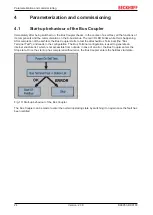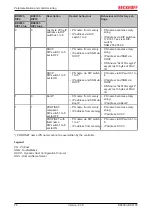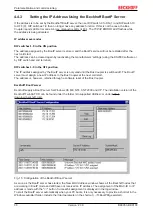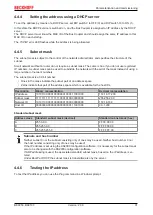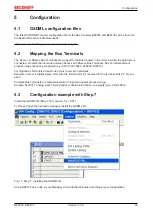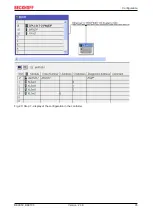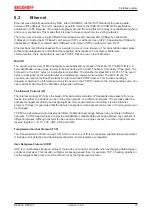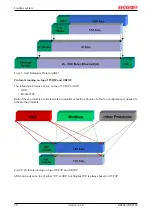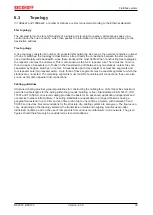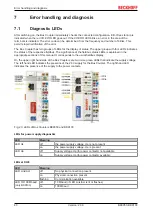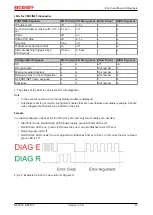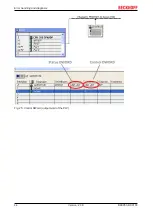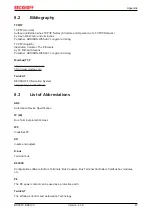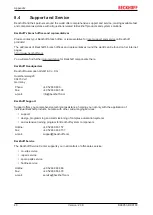
Fieldbus system
BK9053, BK9103
37
Version: 2.3.0
6.2
Ethernet
Ethernet was originally developed by DEC, Intel and XEROX (as the "DIX" standard) for passing data
between office devices. The term nowadays generally refers to the
IEEE 802.3 CSMA/CD
specification,
published in 1985. Because of the high acceptance around the world this technology is available everywhere
and is very economical. This means that it is easy to make connections to existing networks.
There are now a number of quite different transmission media: coaxial cable (10Base5), optical fiber
(10BaseF) or twisted pairs (10BaseT) with screen (STP) or without screen (UTP). Coaxial cable (10Base5),
optical fiber (10BaseF) or twisted pairs (10BaseT) with screen (STP) or without screen (UTP).
Ethernet transmits Ethernet packets from a sender to one or more receivers. This transmission takes place
without acknowledgement, and without the repetition of lost packets. To achieve reliable data
communication, there are protocols, such as TCP/IP, that can run on top of Ethernet.
MAC-ID
The sender and receiver of Ethernet packets are addressed by means of the MAC-ID. The MAC-ID is a 6
byte identification code unique to every Ethernet device in the world. The MAC-ID consists of two parts. The
first part (i.e. the first 3 bytes) is a manufacturer identifier. The identifier for Beckhoff is 00 01 05. The next 3
bytes are assigned by the manufacturer and implement a unique serial number. The MAC-ID can, for
example, be used for the BootP protocol in order to set the TCP/IP number. This involves sending a
telegram containing the information such as the name or the TCP/IP number to the corresponding node. You
can read the MAC-ID with the KS2000 configuration software.
The Internet Protocol (IP)
The internet protocol (IP) forms the basis of this data communication. IP transports data packets from one
device to another; the devices can be in the same network, or in different networks. IP here looks after the
address management (finding and assigning MAC-IDs), segmentation and routing. Like the Ethernet
protocol, IP does not guarantee that the data is transported - data packets can be lost, or their sequence can
be changed.
TCP/IP was developed to provide standardized, reliable data exchange between any numbers of different
networks. TCP/IP was developed to provide standardized, reliable data exchange between any numbers of
different networks. Although the term is often used as if it were a single concept, a number of protocols are
layered together: z. B. IP, TCP, UDP, ARP and ICMP.
Transmission Control Protocol (TCP)
The Transmission Control Protocol (TCP) which runs on top of IP is a connection-oriented transport protocol.
It includes error detection and handling mechanisms. Lost telegrams are repeated.
User Datagram Protocol (UDP)
UDP is connectionless transport protocol. It provides no control mechanism when exchanging data between
sender and receiver. This results in a higher processing speed than, for example, TCP. Checking whether or
not the telegram has arrived must be carried out by the higher-level protocol.


